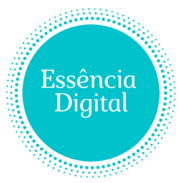Why a Portfolio is Your Most Powerful Sales Tool
For a new freelancer, the blank page of a portfolio is often the most intimidating obstacle. It’s the classic chicken-and-egg dilemma: you need a portfolio to get clients, but you need clients to build a portfolio. This fear can be paralyzing, but it’s a hurdle that every single successful freelancer has overcome. The key is to reframe your thinking. A portfolio is not a historical archive of past jobs; it is a powerful demonstration of your future potential.
Its primary purpose is to answer a potential client’s most important question: “Can this person solve my problem?” A strong, thoughtful portfolio proves that the answer is “yes,” showcasing your skills, your creative process, and your professional standards, regardless of whether you’ve been paid for the work yet. This guide will provide a step-by-step roadmap to building a compelling portfolio from scratch that will help you land those crucial first clients.
The Anatomy of a Powerful Starter Portfolio
A beginner’s portfolio should be built with strategy and intention. It’s not about quantity; it’s about showcasing quality and potential. Here’s what to include:
- Strategic Sample Projects: These are the cornerstone of a new portfolio. Don’t just create random work; create mock projects for the exact type of client you want to attract. If you want to design for craft breweries, design a brand identity for a fictional brewery. If you want to write for SaaS companies, write a series of spec blog posts for a real SaaS product you admire.
- Detailed Case Studies: This is what separates an amateur portfolio from a professional one. For each project (even spec work), write a short case study. This doesn’t have to be long, but it should include:
- The Challenge: The fictional client’s problem or goal.
- Your Process: The steps you took to arrive at a solution.
- The Solution: The final work you produced.
- The Rationale: A brief explanation of why you made certain creative or strategic choices. This demonstrates that you are a strategic thinker, not just a technician.
- Relevant Personal & Passion Projects: Did you design the wedding invitations for a friend? Did you build a personal website to blog about your favorite hobby? Did you create a social media campaign for a cause you care about? This work showcases your authentic style and initiative.
- Character Testimonials & Recommendations: You may not have client testimonials yet, but you can get “character testimonials.” Ask a former boss, professor, or respected colleague to write a recommendation on LinkedIn that speaks to your work ethic, reliability, creativity, and communication skills. These are incredibly valuable for building trust.
How to Create Impressive Work Without a Single Client
You don’t need to wait for permission to create great work. Be proactive and assign yourself projects that will fill your portfolio with relevant, high-quality pieces.
Mission 1: The “Ideal Client” Project
This is your most powerful strategy.
- Identify a Real Company You Admire: Choose a business that represents the type of client you want to work with.
- Find a Real Problem to Solve: Analyze their presence. Is their website copy weak? Is their logo outdated? Is their social media engagement low?
- Create the Solution: Redesign their landing page, rewrite their “About Us” page, or create a mock social media campaign for them. Go deep and produce your absolute best work.
- Write a Detailed Case Study: Document your entire process. This becomes a highly relevant and impressive piece for your portfolio.
Mission 2: The Pro Bono Partnership
Volunteering your skills is a fantastic way to get real-world experience and a glowing testimonial.
- Find a Cause You Love: Reach out to a local non-profit, animal shelter, or community group whose mission you genuinely support. This will keep you motivated.
- Treat It Like a Paid Gig: To avoid being taken advantage of, approach it professionally. Create a simple contract that outlines a clear scope of work, a timeline, and the specific deliverables. In exchange, ask for a written testimonial and permission to feature the work in your portfolio.
Mission 3: Make Your Brand Client Zero
Your own freelance brand is your very first client. Building it out is a legitimate and essential way to populate your portfolio.
- Design your own logo and brand guidelines.
- Write compelling copy for your own website.
- Create a professional and visually appealing PDF version of your portfolio.
- Run your own professional social media accounts, showcasing your skills.
Building Your Showcase: Where and How to Display Your Work
Once you have the work, you need a professional place to display it.
- A Personal Website (Recommended): This is your digital home base. Platforms like Squarespace, Wix, or WordPress make it easy to build a beautiful portfolio site with no coding experience. It is the most professional option and gives you full control.
- Creative Platforms: Websites like Behance (for designers), GitHub (for developers), or Contently (for writers) are excellent places to showcase your work to a built-in community.
- A Simple PDF: At a minimum, create a well-designed PDF portfolio that you can attach to proposals and emails.
Overcoming Impostor Syndrome: The Beginner’s Hurdle
It’s natural to feel hesitant about showcasing unpaid work. You might think, “Who am I to call this a portfolio?” Remember this: clients hire you for your skill, not your resume. The work itself is the evidence. Your passion projects and spec work demonstrate your abilities just as effectively—and sometimes more creatively—than paid assignments. Focus on the quality of the work and the clarity of your case studies.
Conclusion: Start Building Today
Your portfolio is a living document, not a static monument. It will grow and evolve with you throughout your career. Don’t wait for the perfect project to fall into your lap. Stop worrying about the clients you don’t have, and start creating with the skills and initiative you do have. Your promise to a potential client is not what you have done in the past, but what you are capable of doing for them in the future. Now go build the proof.

